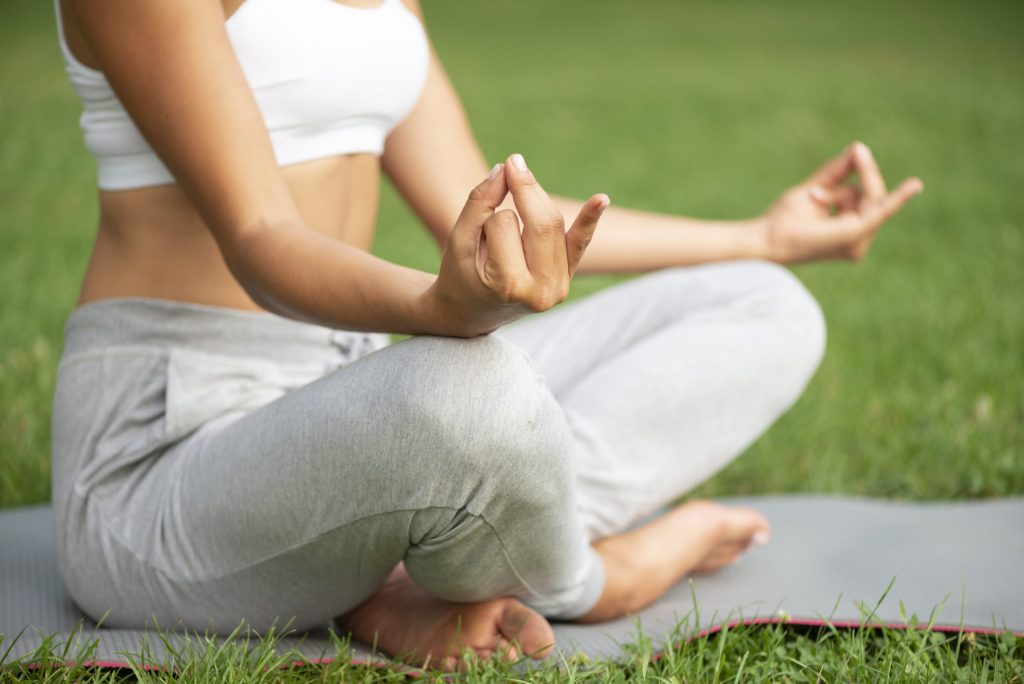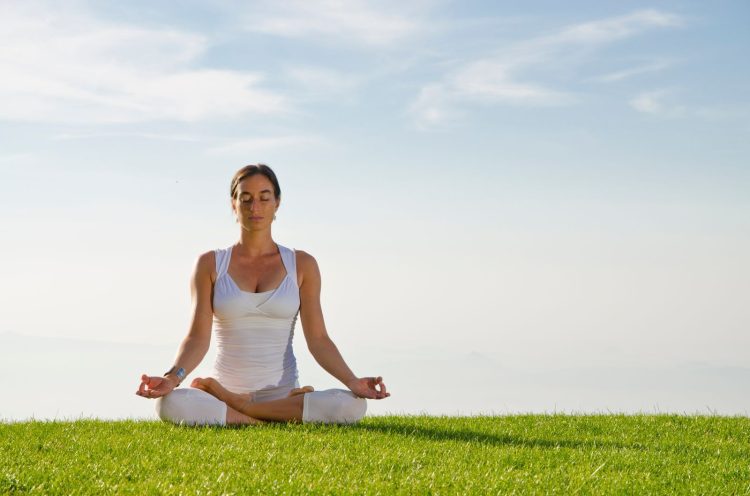Introduction
In recent years, the pursuit of mental and physical well-being has taken on a new form, with more people turning to a combination of exercise and meditation as holistic solutions for improving their overall health. Both practices have been independently lauded for their benefits: exercise is known for its positive effects on physical fitness and mood, while meditation is celebrated for its ability to reduce stress and enhance emotional well-being. But the question remains: can exercise and meditation truly work together to simultaneously improve both our mental and physical health?
In this article, we explore how the combination of exercise and meditation can be a powerful and complementary approach to achieving a healthier body and mind. We will examine the individual benefits of each practice and investigate the science behind how they work synergistically to create lasting improvements in our health.
1. The Benefits of Exercise on Physical and Mental Health
Exercise is one of the most widely recommended ways to improve physical health, but its positive effects extend far beyond just the body. From enhanced cardiovascular function to improved mood, the benefits of regular physical activity are vast.
1.1 Physical Health Benefits
- Improved Cardiovascular Health: Regular exercise strengthens the heart, lowers blood pressure, and improves circulation, reducing the risk of heart disease, stroke, and other chronic conditions.
- Weight Management: Exercise helps regulate weight by increasing metabolism, burning calories, and building muscle mass, which in turn boosts resting metabolic rate.
- Increased Strength and Flexibility: Weight training, yoga, and other forms of exercise build muscle strength, improve flexibility, and enhance overall mobility, making it easier to carry out daily activities.
- Stronger Immune System: Regular physical activity helps regulate immune function, reducing the frequency and severity of illness.
1.2 Mental Health Benefits
- Reduction of Stress and Anxiety: Exercise triggers the release of endorphins, the brain’s “feel-good” chemicals, which help to reduce feelings of stress, anxiety, and depression. Studies have shown that regular physical activity can alleviate symptoms of anxiety disorders and improve emotional resilience.
- Boosted Mood: Exercise enhances the production of serotonin and dopamine, neurotransmitters responsible for regulating mood, energy, and motivation.
- Improved Sleep: Physical activity promotes better sleep by reducing anxiety and muscle tension, leading to deeper and more restful sleep.
- Enhanced Cognitive Function: Exercise boosts blood flow to the brain, improving cognitive function, memory, and focus. It has also been shown to promote neuroplasticity, the brain’s ability to adapt and form new neural connections.
2. The Benefits of Meditation on Mental and Physical Health
Meditation, a practice that involves focusing the mind and calming the body, has been practiced for thousands of years for its therapeutic effects. It is increasingly recognized for its ability to improve both mental and physical well-being.
2.1 Mental Health Benefits
- Stress Reduction: Meditation is one of the most effective tools for reducing stress. Practices like mindfulness meditation and guided relaxation activate the parasympathetic nervous system (the “rest and digest” system), helping to counteract the stress response and induce a state of relaxation.
- Anxiety Relief: Meditation helps individuals gain greater control over their thoughts and emotions, which can reduce the symptoms of anxiety. Mindfulness meditation, in particular, teaches individuals to observe their thoughts without judgment, preventing them from becoming overwhelmed by anxious feelings.
- Emotional Regulation: Regular meditation improves emotional regulation by promoting self-awareness and mindfulness. It helps individuals become more attuned to their emotions and better able to manage them, reducing mood swings and emotional reactivity.
- Improved Focus and Concentration: Meditation trains the brain to focus on the present moment, improving attention span, concentration, and clarity of thought. This can lead to increased productivity and enhanced cognitive performance.
2.2 Physical Health Benefits
- Lowered Blood Pressure: Meditation can help reduce high blood pressure by inducing a relaxation response that calms the nervous system and promotes healthy circulation.
- Reduced Inflammation: Meditation has been shown to reduce markers of inflammation in the body, which is linked to a range of chronic health conditions, including heart disease and autoimmune disorders.
- Pain Management: Mindfulness and meditation have been proven to be effective tools for managing chronic pain. By changing the way the brain processes pain signals, meditation can reduce the perception of pain and improve quality of life for individuals suffering from conditions like arthritis and fibromyalgia.
- Improved Immune Function: Meditation has a positive effect on immune function, making the body more resilient to infections and diseases.
3. How Exercise and Meditation Complement Each Other
While exercise and meditation each offer individual benefits, combining both practices can enhance the results and provide a more balanced approach to mental and physical health. The integration of exercise and meditation provides a synergistic effect, working together to address the body and mind in ways that would be difficult to achieve through either practice alone.
3.1 Reduction of Stress and Anxiety
Both exercise and meditation are highly effective in reducing stress and anxiety, but when combined, they can have an even more profound impact.
- Exercise: Physical activity helps reduce stress by releasing endorphins, which elevate mood and reduce anxiety.
- Meditation: Meditation helps calm the mind and prevent the “fight or flight” response triggered by stress. It encourages deep relaxation and mindfulness, allowing the mind to reset after stressful situations.
When practiced together, exercise and meditation provide a double layer of stress reduction, addressing both the physical and mental symptoms of stress.
3.2 Improved Focus and Emotional Resilience
- Exercise: Physical activity boosts brain function, enhances memory, and improves mood, which all contribute to better focus and emotional resilience.
- Meditation: Meditation enhances mental clarity, concentration, and emotional regulation, helping to foster emotional stability and resilience.
Together, exercise and meditation improve cognitive function and emotional balance, making it easier to cope with life’s challenges.
3.3 Promoting Physical Health While Reducing Mental Fatigue
- Exercise: Exercise strengthens the body, improves cardiovascular health, and increases energy levels. Regular physical activity combats fatigue and promotes overall vitality.
- Meditation: Meditation reduces mental fatigue by promoting deep relaxation and lowering the mental clutter that often leads to feelings of overwhelm.
Together, these practices not only enhance physical health but also help maintain mental clarity and emotional well-being, promoting a sense of balance and calm in both the body and mind.

4. Practical Tips for Integrating Exercise and Meditation into Your Routine
If you’re interested in using both exercise and meditation to improve your mental and physical health, here are some practical tips to get started:
4.1 Start with Light Physical Activity
If you’re new to exercise or meditation, begin with light physical activities such as walking, yoga, or tai chi. These exercises are gentle on the body and can help prepare you for more intense workouts later on. Yoga, in particular, is an excellent way to combine physical movement with mindfulness, making it a perfect entry point for mind-body integration.
4.2 Incorporate Meditation After Exercise
Many people find that meditation is more effective when practiced after exercise. The physical activity helps to release built-up tension in the body, while meditation helps to calm the mind and enhance relaxation. Consider setting aside 5-10 minutes after your workout for a guided meditation or mindfulness session.
4.3 Mindful Movement and Breathing
Incorporate mindfulness into your physical activity by focusing on your breath and body sensations while you exercise. Whether you’re running, lifting weights, or doing yoga, being mindful of your movements can enhance the physical and mental benefits of the workout.
4.4 Create a Balanced Schedule
To ensure you are reaping the benefits of both practices, aim to include both exercise and meditation in your weekly routine. For example, you might practice meditation in the morning to start your day with clarity and calm, followed by a workout in the evening to release any built-up tension.
4.5 Stay Consistent
The key to experiencing the full benefits of exercise and meditation is consistency. Make these practices a regular part of your routine to create lasting positive changes in both your body and mind. Over time, you will begin to notice greater mental clarity, reduced stress, improved physical health, and a deeper sense of overall well-being.
Conclusion
Exercise and meditation are powerful tools for improving both our physical and mental health. While each offers unique benefits, the combination of both can provide a more holistic approach to well-being, enhancing the mind-body connection and promoting a balanced, healthier lifestyle.
By reducing stress, boosting mood, improving focus, and fostering physical vitality, exercise and meditation work synergistically to create a greater sense of balance and harmony. Whether you’re looking to reduce anxiety, improve cardiovascular health, or simply feel more present in your daily life, integrating these practices can help you achieve lasting health benefits.
Ultimately, the combination of exercise and meditation is not just about improving physical fitness or reducing mental stress—it’s about creating a life that is more mindful, grounded, and resilient, where the body and mind work together in harmony to foster a sense of well-being and vitality.










































